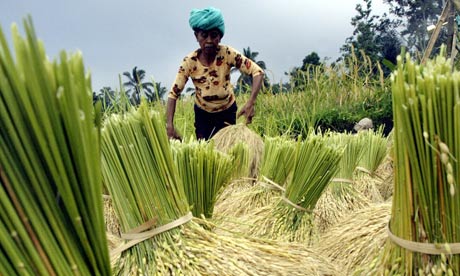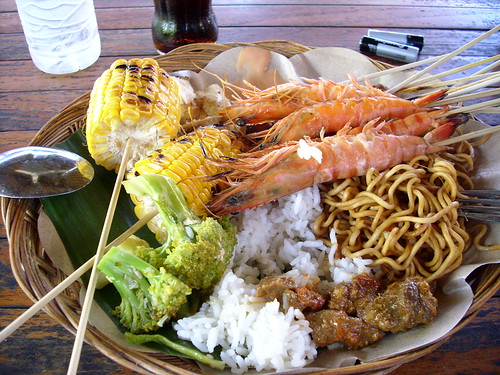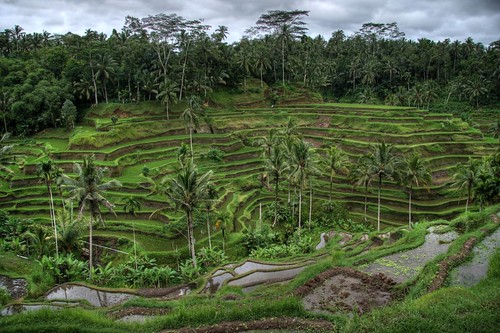Daring rescue of whale off Farallones
 Friday, October 1, 2010 at 11:57AM
Friday, October 1, 2010 at 11:57AM Peter Fimrite, Chronicle Staff Writer
San Francisco Chronicle December 14, 2005 04:00 AM Copyright San Francisco Chronicle. All rights reserved. This material may not be published, broadcast, rewritten or redistributed.
Marine Mammal Center / AP
One of the divers on the rescue team works on the crab pot lines that held the female humpback whale near the Farallon Islands. The weight of the crab pots was pulling the animal down. Marine Mammal Center photo via Associated Press
A humpback whale freed by divers from a tangle of crab trap lines near the Farallon Islands nudged its rescuers and flapped around in what marine experts said was a rare and remarkable encounter.
"It felt to me like it was thanking us, knowing that it was free and that we had helped it," James Moskito, one of the rescue divers, said Tuesday. "It stopped about a foot away from me, pushed me around a little bit and had some fun."
Sunday's daring rescue was the first successful attempt on the West Coast to free an entangled humpback, said Shelbi Stoudt, stranding manager for the Marine Mammal Center in Marin County.
The 45- to 50-foot female humpback, estimated to weigh 50 tons, was on the humpbacks' usual migratory route between the Northern California coast and Baja California when it became entangled in the nylon ropes that link crab pots.
It was spotted by a crab fisherman at 8:30 a.m. Sunday in the open water east of the Farallones, about 18 miles off the coast of San Francisco.
Mick Menigoz of Novato, who organizes whale watching and shark diving expeditions on his boat the New Superfish, got a call for help Sunday morning, alerted the Marine Mammal Center and gathered a team of divers.
By 2:30 p.m., the rescuers had reached the whale and evaluated the situation. Team members realized the only way to save the endangered leviathan was to dive into the water and cut the ropes.
It was a very risky maneuver, Stoudt said, because the mere flip of a humpback's massive tail can kill a man.
"I was the first diver in the water, and my heart sank when I saw all the lines wrapped around it," said Moskito, a 40-year-old Pleasanton resident who works with "Great White Adventures," a cage-diving outfit that contracts with Menigoz. "I really didn't think we were going to be able to save it."
Moskito said about 20 crab-pot ropes, which are 240 feet long with weights every 60 feet, were wrapped around the animal. Rope was wrapped at least four times around the tail, the back and the left front flipper, and there was a line in the whale's mouth.
The crab pot lines were cinched so tight, Moskito said, that the rope was digging into the animal's blubber and leaving visible cuts.
At least 12 crab traps, weighing 90 pounds each, hung off the whale, the divers said. The combined weight was pulling the whale downward, forcing it to struggle mightily to keep its blow- hole out of the water.
Moskito and three other divers spent about an hour cutting the ropes with a special curved knife. The whale floated passively in the water the whole time, he said, giving off a strange kind of vibration.
"When I was cutting the line going through the mouth, its eye was there winking at me, watching me," Moskito said. "It was an epic moment of my life."
When the whale realized it was free, it began swimming around in circles, according to the rescuers. Moskito said it swam to each diver, nuzzled him and then swam to the next one.
"It seemed kind of affectionate, like a dog that's happy to see you,'' Moskito said. "I never felt threatened. It was an amazing, unbelievable experience."
Humpback whales are known for their complex vocalizations that sound like singing and for their acrobatic breaching, an apparently playful activity in which they lift almost their entire bodies out of the water and splash down.
Before 1900, an estimated 15,000 humpbacks lived in the North Pacific, but the population was severely reduced by commercial whaling. In the 20th century, their numbers dwindled to fewer than 1,000. An international ban on commercial whaling was instituted in 1964, but humpbacks are still endangered. Between 5,000 and 7,500 humpbacks are left in the world's oceans, and many of those survivors migrate through the Gulf of the Farallones National Marine Sanctuary.
Whale experts say it's nice to think that the whale was thanking its rescuers, but nobody really knows what was on its mind.
"You hate to anthropomorphize too much, but the whale was doing little dives and the guys were rubbing shoulders with it," Menigoz said. "I don't know for sure what it was thinking, but it's something that I will always remember. It was just too cool."
Humpback whales hold a special place in the hearts of Bay Area residents ever since one that came to be known as Humphrey journeyed up the Sacramento River in 1985. The wayward creature swam into a slough in Rio Vista, attracting 10,000 people a day as whale experts tried desperately to turn it around. Humphrey went back to sea after 25 days of near-pandemonium and worldwide media attention.
In the fall of 1990, Humphrey turned up again inside the bay in shallow water near the Bayshore Freeway, finally beaching on mud flats near Double Rock, just off the Candlestick parking lot. He remained stuck for 25 hours, until volunteers, helped by a 41-foot Coast Guard boat, pulled him free and sent him back to the ocean. He has not been seen since.
Humpbacks like Humphrey do seem to relate to people more than other whales, according to Stoudt.
"You do hear reports of friendly humpbacks, whales approaching boaters, especially in Baja California," Stoudt said, "but, for the most part, they don't like to be interacted with."
This article appeared on page A - 1 of the San Francisco Chronicle














 A Balinese woman bundles rice before drying those during a harvest in Jati Luwih, Bali, Indonesia. Photograph: Firdia Lisnawati/AP
A Balinese woman bundles rice before drying those during a harvest in Jati Luwih, Bali, Indonesia. Photograph: Firdia Lisnawati/AP




